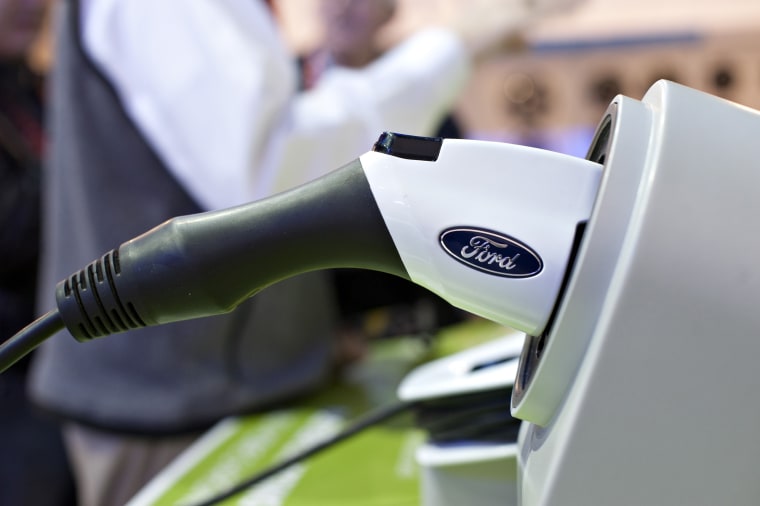Whether you’re using your car for your daily commute or for longer-distance road trips, you don’t usually need to do much planning ahead of time. Not when it runs on gasoline, that is. But if you’ve got an electric vehicle, that is another matter entirely.
Since the first mass market battery-electric vehicle, the Nissan Leaf, made its debut nearly a decade ago, three key obstacles have prevented mass adoption: limited range, a lack of a public charging network, and high prices. But Ford is betting the new model it will introduce at the Los Angeles Auto Show next month will eliminate those roadblocks and make owning a BEV as easy, affordable, and appealing as a gas-powered car.
The second-largest of the Detroit automakers has yet to offer many details about what it describes as a “Mustang-inspired” all-electric SUV, a reference to the sporty, gas-powered mainstay of its line-up. But it has hinted the new BEV will get 315 miles per charge. That exceeds the range many comparable, traditional models deliver on a tank of gas.
Ford is already taking steps to overcome another obstacle, setting up what it describes as the “largest electric vehicle public charging network” in North America, with more than 12,000 stations in the U.S. and Canada, collectively operating about 35,000 chargers. Ford also plans to work with Amazon Home Services to make it easier and more affordable to set up a charger at home.
Ford is just one of many automakers pushing to expand access to public charging. Tesla now operates about 5,000 Supercharger stations in North America alone, with about 12,000 individual chargers. General Motors recently inked a deal with Bechtel to create its own charging network.
Rather than start from scratch, Ford is partnering with commercial charging companies Greenlots, a subsidiary of Shell, and Electrify America, a start-up funded by $2 billion from Volkswagen’s settlement of its diesel emissions scandal. Between them, they plan to blanket much of the country with charging stations, especially on the coasts, where EVs are most popular, and along major cross-country routes.
They and other charging companies, like Chargepoint, are lifting a page from the cellphone industry, eliminating costly roaming fees EV owners have had to pay for plugging into chargers run by companies they don’t have a contract with.
“We’re all about removing the barriers,” said Greenlots SVP Lin-Zhuang Khoo. “The fewer hassles we make for EV drivers, the more adoption will grow.”
Having access to charging stations is a definite plus, but there’s also the question of charging times. And those are falling fast. Most new charging stations use Level 3 technology, which delivers anywhere from 150 to 350 kilowatts of power. The new Porsche Taycan will be able to get an 80 percent top-off of a drained battery in just over 20 minutes. That’s not quite as quick as filling up an empty gas tank, but is a far cry from the 10 hours or more some older BEVs required.
As for cost, the trend for mainstream electric models is downward. GM President Mark Reuss said in June he expects to see battery-cars and gas models reach price parity “sooner” than many have anticipated. That could mean before mid-decade, some studies suggest, as the price of a kilowatt of batteries already has dropped by as much as 90 percent since the Nissan Leaf made its debut.
There’s another critical ingredient, of course: choice. Until recently, the number of BEV options available to U.S. motorists was sorely limited, especially when it came to long-range models. By the end of next year, there will be at least another dozen, and perhaps as many as 20 more in showrooms, including the eagerly awaited Tesla Model Y, its first mainstream-priced SUV.
U.S. battery car sales — including plug-in hybrids and all-electric models — broke the 100,000 mark for the first time just three years ago and topped 300,000 last year. Growth in key overseas markets has been even faster. China sold over 1 million last year, and all-electric models routinely make up more than one-third of the demand in Norway.
Whether lower prices, longer range, and more — and faster — public chargers will get U.S. buyers to plug in is far from certain, but there are clear signs that things are moving in that direction.
